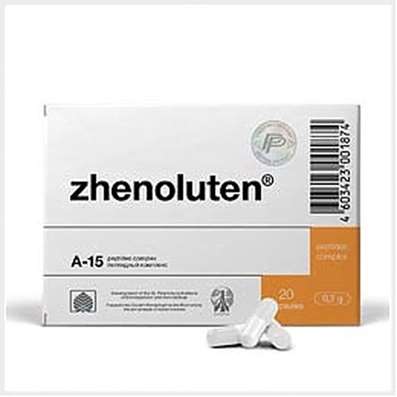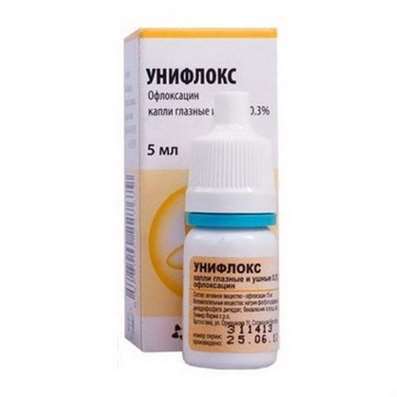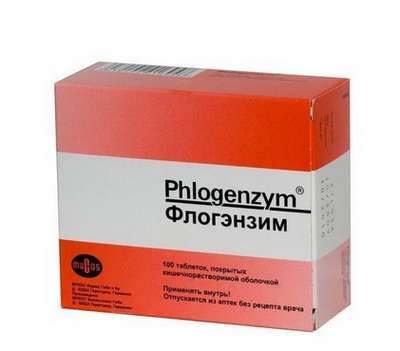Instruction for use: Ethyl biscoumacetate
I want this, give me price
Trade name of the drug – Pelentan
The Latin name of the substance Ethyl biscoumacetate
Aethylii biscoumacetas (genus. Aethylii biscoumacetatis)
Chemical name
4-Hydroxy-α- (4-hydroxy-2-oxo-2H-1-benzopyran-3-yl) -2-oxo-2H-1-benzopyran-3-acetic acid ethyl ester
Gross formula
C22H16O8
Pharmacological group:
Anticoagulants
The nosological classification (ICD-10)
I21 Acute myocardial infarction: Myocardial infarction in the acute phase; Acute Myocardial Infarction; Myocardial infarction with pathologic Q wave and without; Myocardial infarction complicated by cardiogenic shock; Infarction left ventricular; Transmural myocardial infarction; Myocardial infarction netransmuralny (subendocardial); Netransmuralny myocardial infarction; Subendocardial myocardial infarction; The acute phase of myocardial infarction; Acute myocardial infarction;Sub-acute phase of myocardial infarction; Subacute phase of myocardial infarction; Thrombosis of the coronary arteries (the arteries); Threatened myocardial infarction; Myocardial infarction without Q wave
I26 Pulmonary embolism: Recurrent thromboembolism of the pulmonary artery; Recurrent pulmonary embolism; Thromboembolism of the branches of the pulmonary artery; Thromboembolism of the lungs; Thromboembolism of the pulmonary artery (PE); Thrombosis of the pulmonary artery; Thromboembolism; Thromboembolism of the pulmonary artery; Thromboembolism; Pulmonary embolism; Thromboembolism of the pulmonary artery and its branches; Thromboembolism of pulmonary vessels; Embolism of the lung; Embolism of the pulmonary artery; Acute massive thromboembolism of the pulmonary artery
I73.1 thromboangiitis obliterans [Buerger's disease]: Berger's disease; thromboangiitis obliterans; trombangiit; thromboangiitis obliterans; Buerger's disease
I74 Embolism and arterial thrombosis: Thrombosis of effort (stress); Arterial thrombosis; Arteriothrombosis; Subacute and chronic arterial thrombosis; Subacute thrombosis of peripheral arteries; Postoperative thrombosis; Vascular thrombosis; Vascular embolism; Thrombosis of aortocoronary shunt; Arterial thrombosis; Thrombosis of arteries; Coronary artery thrombosis; Coronary thrombosis; Thrombosis of blood vessels; Thrombosis with ischemic stroke; Thrombosis with general surgical operations; Thrombosis in Oncology Operations; Vascular thrombosis; Thrombus formation in the postoperative period; Thrombotic complications; Thromboembolic diseases; Thromboembolic syndrome; Thromboembolic complication in the postoperative period; Thromboembolism of arteries; Partial vascular thrombosis; Embolism; Embolism of arteries
I79.2 Peripheral angiopathy in diseases classified elsewhere: diabetic angiopathy; Angiopathy in diabetes; arteriosclerosis diabetic; Pain in lesions of peripheral nerves; Diabetic angiopathy; Diabetic microangiopathy; Diabetic vascular disease; Intermittent angioneurotic disbaziya; Macroangiopathy in diabetes; microangiopathy; Microangiopathy in diabetes mellitus; Tingling sensations in the hands and feet; Coldness in the extremities; Peripheral angiopathy; Peripheral arterial disease; Sclerosis Menkeberga; Chronic obliterating diseases of arteries
I80 Phlebitis and thrombophlebitis: Diseases of peripheral vessels; Inflammation of superficial veins; Inflammatory diseases of veins; Deep venous thrombophlebitis; The disease of veins; Disease of the veins of the lower extremities; Diseases of peripheral vessels; Migrating phlebitis; Insufficiency of veins of lower extremities; Exacerbation of chronic thrombophlebitis; Acute thrombophlebitis; Acute thrombophlebitis of superficial veins; Periphlebitis; Periflebit surface; Superficial inflammation of veins; Surface thrombophlebitis; Surface phlebitis; Thrombophlebitis; Deep vein thrombophlebitis; Thrombophlebitis superficial; Phlebitis; Phlebitis of deep veins; Phlebitis of superficial veins; Phlebopathy; Chronic thrombophlebitis; Endophlebitis
I82 Embolism and thrombosis of other veins: Recurrent venous thrombosis; Postoperative thrombosis; Venous thrombosis; Acute venous thromboembolism; Recurrent vein thrombosis; Venous thrombosis; Thrombosis of veins of internal organs; Venous thrombosis; Deep vein thrombosis; Thrombosis of blood vessels; Vascular thrombosis; Thrombosis of veins; Deep vein thrombosis; Thromboembolic diseases; Thromboembolism of veins; Severe venous thrombosis; Embolism; Embolism of veins; Thromboembolic complications
I82.9 Embolism and thrombosis of unspecified vein: Venous embolism; Venous thrombosis; Diseases caused by blood clots in the vessels; Acute vascular occlusion; Acute venous thrombosis; Acute thrombosis of veins; Thrombosis; Thromboembolism; Phlebothrombosis; Embolism
R07.2 Pain in the heart: neuroses of the heart; Myocardial ischemic pain; Pain syndrome in myocardial infarction; cardialgia; cardioneurosis; Cardiac syndrome; Pain in cardiac patients; Cardialgia on background dyshormonal myocardial dystrophy; Functional cardialgia; Psevdostenokardiya; pericardial pain
Z100 * CLASS XXII Surgical practice: Abdominal surgery; adenomectomy; Amputation; Coronary angioplasty; Angioplasty of the carotid arteries; Antiseptic skin treatment for wounds; Antiseptic Hand; Appendectomy; atherectomy; Balloon coronary angioplasty; Vaginal hysterectomy; The coronary bypass; Interventions in the vagina and cervix; Interventions on the bladder; Intervention in the mouth; Restoration and reconstructive surgery; Hand hygiene of medical personnel; Gynecologic surgery; Gynecological intervention; Gynecological surgery; Hypovolemic shock during operations; Disinfection of purulent wounds; Disinfection of wounds edges; Diagnostic intervention; Diagnostic procedures; Cervical Diathermocoagulation; Long-surgery; Replacing the fistula catheters; Infection in orthopedic surgery; Artificial heart valve; cystectomy; Short-term outpatient surgery; Short-term operation; Short surgical procedures; Krikotireotomiya; Blood loss during surgery; Bleeding during surgery and in the postoperative period; Kuldotsentez; laser photocoagulation; laser coagulation; retinal laser coagulation; Laparoscopy; Laparoscopy in Gynecology; CSF fistula; Small gynecological operations; Small surgical procedures; Mastectomy and subsequent plastic; mediastinotomy; Microsurgical operations on the ear; Mukogingivalnye operation; suturing; Minor surgery; neurosurgical operation; Immobilization of the eyeball in ophthalmic surgery; testectomy; pancreatectomy; Perikardektomiya; The period of rehabilitation after surgery; The period of convalescence after surgery; Percutaneous transluminal coronary angioplasty; Pleural thoracentesis; Pneumonia postoperative and posttraumatic; Preparation for surgical procedures; Preparation for surgery; Preparation of the surgeon's hands before surgery; Preparation of the colon for surgical procedures; Postoperative aspiration pneumonia in neurosurgical and thoracic surgery; Postoperative nausea; Postoperative bleeding; postoperative granuloma; postoperative shock; The early postoperative period; myocardial revascularization; Radiectomy; gastric Resection; bowel resection; uterine Resection; liver Resection; enterectomy; Resection of part of the stomach; Reocclusion of the operated vessel; Bonding tissues during surgical procedures; Removal of sutures; Condition after eye surgery; Condition after surgery; Condition after surgery in the nasal cavity; Condition after gastrectomy; Status after resection of the small intestine; Condition after tonsillectomy; Condition after removal of the duodenum; Condition after phlebectomy; Vascular surgery; Splenectomy; Sterilization of surgical instruments; Sterilization of surgical instruments; sternotomy; Dental surgery; Dental intervention in periodontal tissues; strumectomy; Tonsillectomy; Thoracic surgery; Thoracic surgery; total gastrectomy; Transdermal intravascular coronary angioplasty; Transurethral resection; Turbinektomiya; Removal of a tooth; cataract surgery; Removal of cysts; tonsillectomy; Removal of fibroids; Removing the mobile primary teeth; Removing polyps; Removing broken tooth; Removal of the uterus body; Removal of sutures; Fistula likvoroprovodyaschih ways; Frontoetmoidogaymorotomiya; Surgical infection; Surgical treatment of chronic limb ulcers; Surgery; The surgery in the anal area; The surgery on the colon; Surgical practice; The surgical procedure; Surgical interventions; Surgery on the gastrointestinal tract; Surgical procedures on the urinary tract; Surgical procedures on the urinary system; Surgical intervention of the genitourinary system; Surgical procedures on the heart; Surgical manipulation; surgery; Surgery on the veins; Surgical intervention; Vascular surgery; Surgical treatment of thrombosis; Surgery; cholecystectomy; Partial gastric resection; hysterectomy; Percutaneous transluminal coronary angioplasty; Percutaneous transluminal angioplasty; Coronary artery bypass; tooth Extirpation; Extirpation of milk teeth; pulpectomy; pulsative cardiopulmonary bypass; tooth Extraction; teeth Extraction; cataract extraction; Electrocoagulation; endourological intervention; episiotomy; Etmoidotomiya; Complications after tooth extraction
CAS code
548-00-5
Characteristics of substance Ethyl biscoumacetate
White or white with a slightly yellowish tint fine crystalline powder odorless. Very little soluble in water and alcohol.
Pharmacology
Mode of action - Anticoagulant.
It blocks vitamin K-reductase and disrupts hepatic biosynthesis of II, VII, IX and X coagulation factors. It causes an increase in plasma recalcification time and a decrease in tolerance to heparin. Reduces the level of lipids in the blood, increases the permeability of blood vessels, enhances the prostacyclin-synthesizing activity of the vascular wall. The anticoagulant effect develops slowly (depends on the rapid elimination of coagulation factors) and is characterized by a duration.
When ingested quickly absorbed. With blood proteins (mainly with albumins) binds to 90%. Penetrates through the placental barrier, excreted in breast milk. Undergoing biotransformation. It is excreted by the kidneys in the form of inactive metabolites. T1 / 2 averages 2.5 hours. The effect manifests itself in 2-3 hours, reaches a maximum after 12-30 hours.
Application of substance Ethyl biscoumacetate
Treatment and prevention of thrombosis and thromboembolism: venous thrombosis, pulmonary embolism of the pulmonary artery and arteries of the circulatory system, thrombosis of the heart cavity, thromboembolic complications (including after surgical interventions on the heart, atrial fibrillation, coronary artery disease, left ventricular aneurysm, thrombosis of the heart cavity ), Thromboangiitis obliterans, peripheral arterial disease, surface vein thrombophlebitis, congenital deficiency of antithrombin III and proteins C, S (including acute nephrotic syndrome).
Contraindications
Hypersensitivity, hemorrhagic diathesis, hemorrhage, hyperfibrinolysis, hemorrhagic stroke, myocardial infarction at high values of blood pressure, arterial hypertension with a risk of cerebral hemorrhage, expressed violations of the liver and kidney function, peptic ulcer of the stomach and duodenum, ulcerative colitis, trauma, the upcoming operation, Pregnancy, the postpartum period, breast-feeding (breastfeeding should be stopped), neonatal age.
Side effects of the substance Ethyl biscoumacetate
Increased bleeding, dyspeptic phenomena, alopecia, fever, allergic reactions (skin rashes, "coumarin" necrosis of the skin and subcutaneous tissue).
Interaction
The anticoagulant effect is enhanced by salicylates, pyrazolones, dextropropoxyphene, phenamates, ethacrynic acid, oral hypoglycemic drugs, sulfonamides and co-trimoxazole, chloramphenicol, metronidazole, tetracyclines, quinidine, disulfiram, narcotic analgesics, anabolics, phenothiazines, thiouracil, reserpine, allopurinol, thiobarbiturates, thyroxine , Cimetidine, ethanol and ethanol containing drugs, nicotinic acid, weaken - antacids, griseofulvin, barbiturates, glutetimide, hydantoins, rifampicin, carbamazepine, cardiac glycosides, tranquilizers, methylxanthines, mercaptopurine, glucocorticoids, oral contraceptives, antihistamines, but especially vitamin K1 (A competitive antagonist). Increases the activity of butamide (hypoglycemia), toxicity of diphenine, ulcerogenicity of glucocorticoids.
Overdose
Symptoms: increased bleeding, bleeding (in severe cases).
Treatment: with life-threatening hemorrhages - immediate transfusion of the concentrates of factors of the prothrombin complex, fresh frozen plasma or whole blood. To reduce the phenomena of hypocoagulation - in / in or / m administration of vitamin K1 preparations: at a dose of 5-15 mg (provides the possibility of continuing treatment with indirect anticoagulants) or 25-50 mg (restores hemostasis for 6-24 hours, but causes resistance to Anticoagulation therapy in the next 2 weeks); All activities are carried out against the background of the abolition of ethyl biscumacetate (or dose reduction).
Routes of administration
Inside.
Precautions for the substance Ethyl biscoumacetate
During the treatment, it is mandatory to monitor the coagulability of blood. Cancel the drug should be gradual, tk. With a sudden discontinuation of reception possible hypercoagulability and recurrence of thrombosis.

 Cart
Cart





